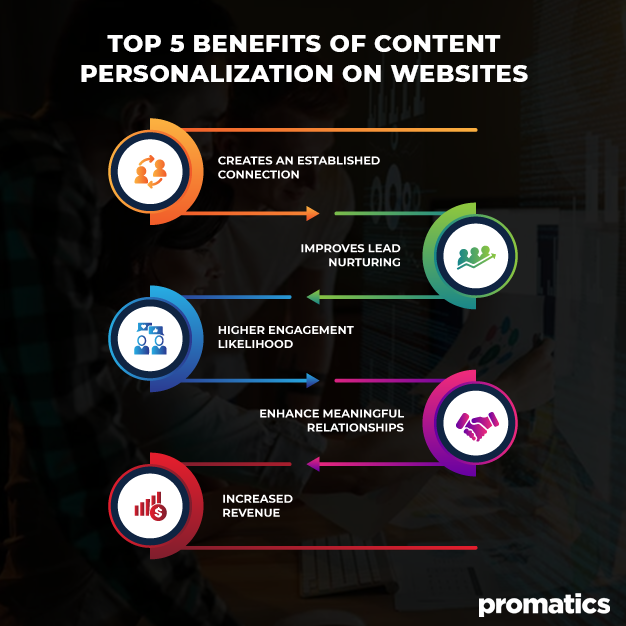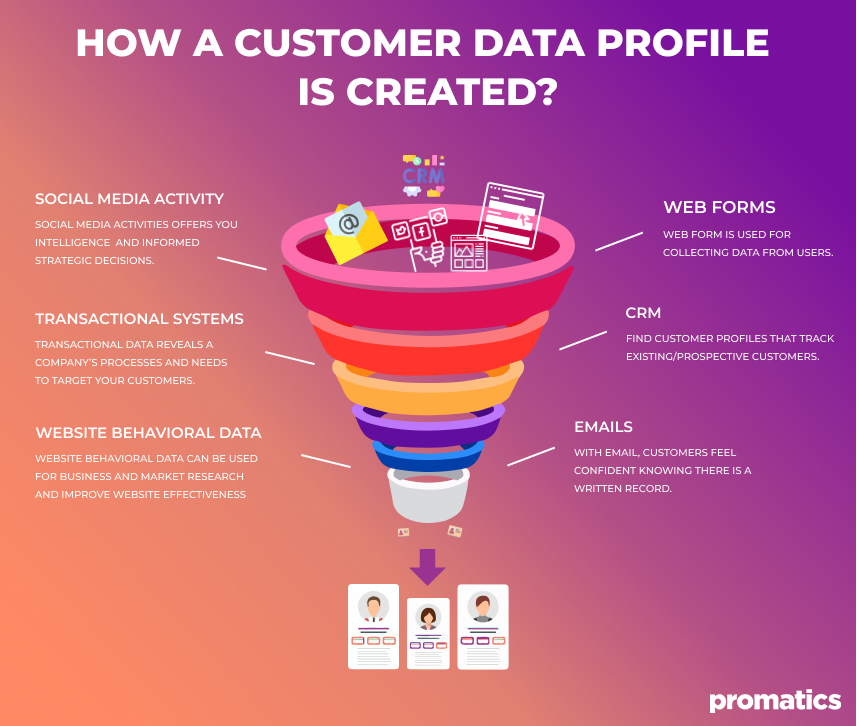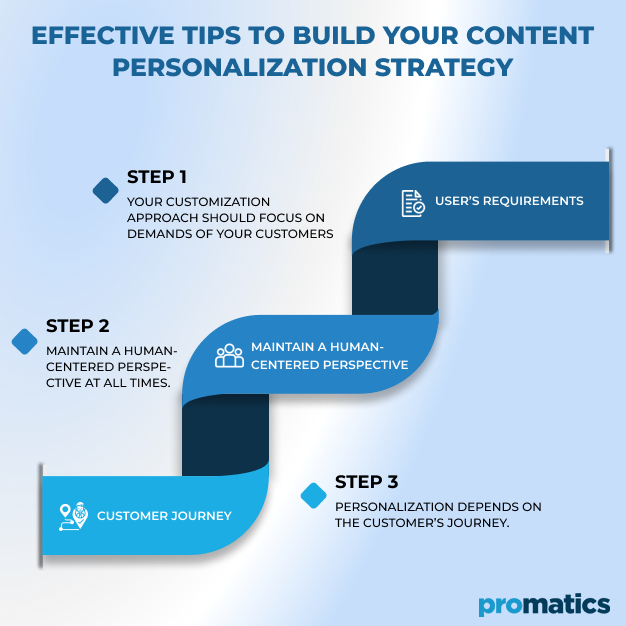How to Implement Content Personalisation in Your Website?
This is the first in a series of articles in which our primary focus is laid on content personalization with a great amount of emphasis: What is it, what are the benefits, and how can you include it into your current business strategy? Please ensure the metaphoric submarine is securely fastened because we’re about to embark on a deep-topic dive!
Things are more delightful when they match our likes, opinions, ambitions, and objectives. It’s like going to a frozen yogurt shop: You may select flavor or taste combinations (strawberry and cheesecake!) and a selection of embellishments, syrups, or sauces (I recommend putting on all fruit options and drizzling with chocolate sauce). Delectable and precisely what you desire. It’s as if it was made for you by you because, well, it was.
That is essentially the concept of content personalization: Marketers aim to personalize messaging as much as practicable to capture your curiosity and persuade you to sign up for a newsletter, purchase a product, or participate in a demonstration. But it’s not just about communications: content customization is about tailoring a consumer’s whole experience.
Personalization of content is more than just a clever marketing technique; it is quickly becoming the standard. Providing a tailored experience for your audience is the key to unlocking more: more sales, trust, and Profitability. You can better relate to your customers with your digital marketing efforts if you know who they are. You’ll be certainly well enough on your way to a more significant ROI when you do.
Yes, there are hurdles to implementing personalization properly (which we shall address later), but it is not unachievable. And as marketing automated systems develop, it will be much simpler to determine what form of personalization our demographic reacts to (and through what mediums and networks).
The Content Marketing Institute defines content customization as “a method that incorporates visitor data to offer relevant content based on audience interests and intentions. It’s a usability evaluation bypass that links your audience with the information they need faster, increasing the likelihood of landing the lead.”
Personalizing that material and providing that experience to clients was tough until recently. While many companies take the opportunity to provide individualized information and experiences, according to the 2018 Evergage, Inc. Trends in Personalization data analysis, just 31% of advertisers feel it is done successfully. According to the data, 55 percent of marketers do not think they know the necessary to tailor their content in the first place appropriately.
Part of the perception of a lack of information derives from customers’ differing perspectives on what personalization is and could be. Frequently, modification is required to tailor the offer to the consumer’s preferences while observing surfing activities and following purchase trends are needed.
Each consumer reacts differently to various sorts and intensities of customization; thus, it is the advertiser’s responsibility to figure out what they are so that their personalization strikes the point.
When you consider your own buying experience, the necessity of personalization becomes evident. Do you appreciate tailored suggestions and incentives when visiting a company’s webpage? What about material that is personally meaningful to you or is linked to an item or brand you’ve just procured? Like other customers, you may have learned to anticipate it as a standard aspect of your online experience.
Consumer expectations for relevant, personalized, and convenient experiences have reached unparalleled heights in the digital era. Simply put, customers have grown capable of obtaining what they desire and are leaning toward businesses that treat them as individuals at every point of the customer journey. Fulfilling those aspirations falls entirely on marketers’ shoulders, who must employ sophisticated personalization methods if they wish to keep customers interested and returning for more.
For your better understanding and convenience, our team of experts has devised and assembled all the key essential benefits we find important and certainly think that would play a pivotal role in bringing ease to the lives of our readers.
Major Benefits of Content Personalisation
I. Creates an Established Connection
Your marketing staff will not have to persuade individuals with useless verbiage if you maintain track of user information, preferences, and behavior. You may provide consumers with relevant content, products, and services that will keep them engaged for longer.
II. Improves Lead Nurturing
When a publication tailors material to a specific person’s behavior and interests, they build potent linkages and convert the increasingly high leads into MQLs (marketing qualified leads) and sales qualified leads.
III. Higher Engagement Likelihood
As a firm reaches a potential customer with the perfect information at the right moment, the possibility of conversion improves when compared to when a customer receives an irrelevant message, particularly at an inconvenient time. If a corporation tailors an experience for that unique person, the prospective consumer will likely become a paying customer.
IV. Increased Revenue
Knowing a consumer’s favorite channels of contact (Facebook, Instagram, Emails) allows marketers to focus their efforts on those channels to drive a purchase.
For example, if a consumer often checks your brand’s website and other social media presence, you may concentrate your efforts on capturing their attention through those channels. You may personalize their experiences and propose products based on their specified preferences.
And, when customers appreciate what a brand provides them (in terms of user experience and product), they are more likely to return to the site and buy a product, increasing the company’s ROI.
V. Enhance Meaningful Relationships
Consumer purchase choices are influenced by the user’s emotions and how they feel at the time. As a result, many organizations employ content personalization as a differentiating tactic to retain existing consumers. If your content can strike an emotional chord with your target audience, adding a veneer of data-driven personalization can boost its effect.
Marketers have divided their consumers based on age, gender, and region criteria in recent years. This segmentation enabled them to tailor their messaging on a somewhat more intimate level.
Effective content personalization, on the other hand, has progressed beyond this.
Marketers can now evaluate customer journeys to acquire more facts and construct a tailored picture of each consumer thanks to content customization tools, rich customer data, and newer technology. Newsletters, case studies, blog posts, web page portions, resources, photos, news stories, CTAs, body text, and other engagements often used by content marketers may be tailored. All of this contributes to a stronger emotional connection with the end consumers.
As a result, they can raise conversion rates, improve campaign performance, and encourage participation. Because it changes in real-time and provides customized user experiences, personalized content is known as ‘dynamic content.
Now, you may be wondering that all these intricacies have left you befuddled but don’t worry, we’ve got it all covered. To give our readers a better understanding of the concept, we have written down content personalization tools that would certainly give you a heads up and a pat on your back to get things started.
a.) Customer Data Platforms
A Customer Data Platform is a type of tech that combines customers’ information from several interactions and organizes the real-time data into individual customer profiles. CDPs create these “customer profiles” by gathering information from several first, second, and third-party sources (social media activity, web forms, website behavioral data, CRM, emails, and transactional systems).
b.) Google Tag Manager
An aggregation and analysis variable in Google Tag Manager (GTM) is used to trigger personalization. Marketers may enter practically any material into this database layer and show customized content to various target segments. In other words, publishers may utilize Google Tag Manager to create a more personalized environment for their audiences, enhance on-site user experience, and boost conversion rates.
c.) Data Management Platform
A data management platform collects, organizes, and engages all audience data from various sources (first, second, and the third party) (online, mobile, offline, and beyond). Because they enable organizations to obtain unique insights into their clients, these technologies have become the backbone of data-driven and personalized content marketing.
How do You Create a Content Personalization Strategy?
If you believe in the benefits of content personalization, it’s time to understand how to do it effectively.
i.) Address the user’s requirements
Consider your prospective audience’s pain issues before you begin tailoring information. Consider all of the concerns that your product, service, or content can answer. Your customization approach should focus on satisfying the demands of your customers rather than bragging about how fantastic your product is. As a result, regardless of whether they will buy from you or not, focus on providing something beneficial for end customers.
ii.) Address individuals:
Maintain a human-centered perspective at all times. When speaking to a potential consumer, make them feel like they are the only one in the space. Talk to them as persons, not as numbers. This will pave the way for genuine partnerships that will subsequently be advantageous for your company.
iii.) Personalization depends on the customer’s journey.
Customer journey maps are required to transform wide-ranging material into information appropriate to each customer touch point experience. The map should address different audiences at various points of the trip. In other words, your content should be aligned with each step of the user experience. This will aid in delivering material relevant to a customer’s stage in their journey, ensuring they proceed towards the next step.
Data is the Key
Personalization entails employing audience and data analytics to fulfill a user’s unique wants. Begin by utilizing your data to understand the specifics of each of your consumers, their objective at any given time, and where, when, and how they’ve formerly connected with your business.
Data is the key to getting to know people well enough to meet their requirements and predict what they might desire at a future point of interaction.
So you know you want to provide tailored, contextual experiences to your consumers and that a 360-degree perspective of their interactions is required – but how can you accomplish it? A digital experience platform, such as Sitecore Experience Platform, might be beneficial. Because of its integrated database and machine learning, it is capable of real-time, always-on personalization at scale. You can also see how Sitecore customization helps to narrow the gap.
Expectations of customers are significant. People know what they want and anticipate having it whenever and however they want it. To achieve these expectations, marketers must produce incredibly individualized, meticulously crafted messaging, promotions, and experiences — while being non-intrusive.
There are methods to demonstrate to your customers that you’ve heard their concerns and fully understand what they’re seeking without exceeding the line. For example, data may reveal that a specific client prefers gluten-free items. You can then use that knowledge in a way customers will enjoy by tailoring your website content to offer a gluten-free spaghetti meal recipe.
More isn’t always better when invading a consumer’s personal space. Please pay close attention to what your consumers say, then utilize appropriate methods to provide them with individualized experiences.
Why we Believe Content Personalization is the Future
The main point is that consumers are tired of being bombarded with nonsense. Your website will become more appealing when appropriate material is delivered consistently, resulting in more engagements. In summary, investing in content customization may reap significant benefits for companies. When it comes to content creation, you can’t afford to personalize it. Among the most successful strategies to improve engagement is to personalize content. Tailored messaging is the only way that 72 percent of customers will engage. Throughout this article, we looked at what content personalization is, why it matters, and how you can get started right now.
Unfortunately, too extensive registration pages or lengthy contact forms are more likely to turn people away than to boost your chances of obtaining the information you want. These clients are new to your business at this point in the process, so you’ll need to devote time to getting to know them. To start, probably ask more manageable questions. Then think about including a market analysis solution like Clearbit, which enhances data with 100+ credible firmographic, demographic, and technological factors. Conversely, you might go out of your way to enhance your data. Consider posing a question in your following email to your contacts. When they click on an answer, Otto collects it using UTM parameters and adds it to the user’s record. This information may then be used to create your following email or even a tailored customer experience.
If you’re ready to use personalization to boost the success of your content, we’d love to assist you. Data is the foundation of personalized marketing, and the more data you have about your clients, the more tailored your branding will be. Once you begin tailoring your content, you will see benefits throughout your marketing function. Conversions will rise, more interaction with your efforts, and prospects will perceive you from a brighter perspective.
And it might mean the difference between a prospective consumer choosing you or your rival.
Still have your concerns?
Your concerns are legit, and we know how to deal with them. Hook us up for a discussion, no strings attached, and we will show how we can add value to your operations!



